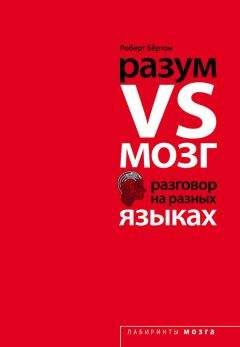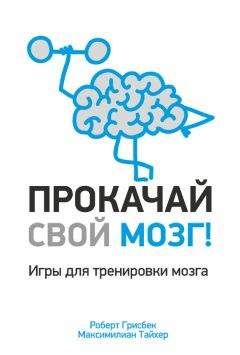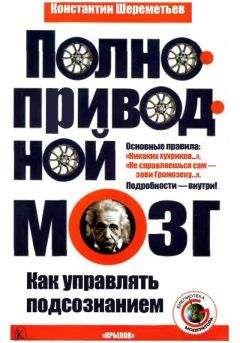C. (2002). Brain mechanisms for reading words and pseudowords: An integrated approach. Cerebral Cortex 12(3):297–305.
Simos, P. G., Breier, J. I., Fletcher, J. M., Foorman, B. R., Mouzaki, A., & Papanicolaou, A. C. (2001). Age-related changes in regional brain activation during phonological decoding and printed word recognition. Developmental Neuropsychology 19(2):191–210.
Simos, P. G., Fletcher, J. M., Bergman, E., Breier, J. I., Foorman, B. R., Castillo, E. M., Davis, R. N., Fitzgerald, M., & Papanicolaou, A. C. (2002). Dyslexia-specific brain activation profile becomes normal following successful remedial training. Neurology 58(8):1203–1213.
Siok, W. T., Perfetti, C. A., Jin, Z., & Tan, L. H. (2004). Biological abnormality of impaired reading is constrained by culture. Nature 431(7004):71–76.
Smith, L. B. (2003). Learning to recognize objects. Psychological Science 14(3):244–250.
Son, J. Y., Smith, L. B., & Goldstone, R. L. (2008). Simplicity and generalization: Short-cutting abstraction in children’s object categorizations. Cognition 108(3):626–638.
Southgate, V., Csibra, G., Kaufman, J., & Johnson, M. H. (2008). Distinct processing of objects and faces in the infant brain. Journal of Cognitive Neuroscience 20(4):741–749.
Sperber, D. (1974). Contre certains a priori anthropologiques. // Morin, E. & Piatelli-Palmarini, M. (Eds.), L’unité de l’homme: Invariants biologiques et universaux culturels (c. 491–512). Paris: Le Seuil.
–—. (1996). Explaining culture: A naturalistic approach. London: Blackwell.
Sperber, D., & Hirschfeld, L. A. (2004). The cognitive foundations of cultural stability and diversity. Trends in Cognitive Sciences 8:40–46.
Sperling, J. M., Prvulovic, D., Linden, D. E., Singer, W., & Stirn, A. (2006). Neuronal correlates of colour-graphemic synaesthesia: an fMRI study. Cortex 42(2):295–303.
Spoehr, K. T., & Smith, E. E. (1975). The role of orthographic and phonotactic rules in perceiving letter patterns. Journal of Experimental Psychology: Human Perception and Performance 104(1):21–34.
Sprenger-Charolles, L., & Siegel, L. (1997). A longitudinal study of the effects of syllabic structure on the development of reading and spelling skills in French. Applied Psycholinguistics 18:485–505.
Sprenger-Charolles, L., Siegel, L. S., & Bonnet, P. (1998). Reading and spelling acquisition in French: The role of phonological mediation and orthographic factors. Journal of Experimental Child Psychology 68(2):134–165.
Stein, J. (2001). The magnocellular theory of developmental dyslexia. Dyslexia 7(1):12–36.
Streifler, M., & Hofman, S. (1976). Sinistrad mirror writing and reading after brain concussion in a bi-systemic (oriento-occidental) polyglot. Cortex 12:356–364.
Stuart, M. (1990). Processing strategies in a phoneme deletion task. Quarterly Journal of Experimental Psychology A 42:305–327.
Swinney, D. A., Onifer, W., Prather, P., & Hirshkowitz, M. (1979). Semantic facilitation across sensory modalities in the processing of individual words and sentences. Mem Cognit 7(3):159–165.
Taft, M. (1994). Interactive activation as a framework for understanding morphological processing. Language and Cognitive Processes 9:271–294.
Tagamets, M. A., Novick, J. M., Chalmers, M. L., & Friedman, R. B. (2000). A parametric approach to orthographic processing in the brain: An fMRI study. Journal of Cognitive Neuroscience 12(2):281–297.
Tallal, P., & Gaab, N. (2006). Dynamic auditory processing, musical experience and language development. Trends in Neurosciences 29(7):382–390.
Tamura, H., & Tanaka, K. (2001). Visual response properties of cells in the ventral and dorsal parts of the macaque inferotemporal cortex. Cerebral Cortex 11(5):384–399.
Tan, L. H., Liu, H. L., Perfetti, C. A., Spinks, J. A., Fox, P. T., & Gao, J. H. (2001). The neural system underlying Chinese logograph reading. Neuroimage 13(5):836–846.
Tan, L. H., Spinks, J. A., Gao, J. H., Liu, H. L., Perfetti, C. A., Xiong, J., Stofer, K. A., Pu, Y., Liu, Y., & Fox, P. T. (2000). Brain activation in the processing of Chinese characters and words: A functional MRI study. Human Brain Mapping 10(1):16–27.
Tanaka, K. (1996). Inferotemporal cortex and object vision. Annual Review of Neuroscience 19:109–139.
–—. (2003). Columns for complex visual object features in the inferotemporal cortex: Clustering of cells with similar but slightly different stimulus selectivities. Cerebral Cortex 13(1):90–99.
Tanaka, M., Tomonaga, M., & Matsuzawa, T. (2003). Finger drawing by infant chimpanzees (Pan troglodytes). Animal Cognition 6(4):245–251.
Tarkiainen, A., Cornelissen, P. L., & Salmelin, R. (2002). Dynamics of visual feature analysis and object-level processing in face versus letter-string perception. Brain 125(Pt 5):1125–1136.
Tarkiainen, A., Helenius, P., Hansen, P. C., Cornelissen, P. L., & Salmelin, R. (1999). Dynamics of letter string perception in the human occipitotemporal cortex. Brain 122(Pt 11):2119–2132.
Tarr, M. J., & Gauthier, I. (2000). FFA: A flexible fusiform area for subordinate-level visual processing automatized by expertise. Nature Neuroscience 3(8):764–769.
Tarr, M. J., & Pinker, S. (1989). Mental rotation and orientation-dependence in shape recognition. Cognitive Psychology 21(2):233–282.
Temple, E., Deutsch, G. K., Poldrack, R. A. Miller, S. L., Tallal, P., Merzenich, M. M., & Gabrieli, J. D. (2003). Neural deficits in children with dyslexia ameliorated by behavioral remediation: evidence from functional MRI. Proceedings of the National Academy of Sciences 100(5):2860–2865.
Temple, E., Poldrack, R. A. Protopapas, A., Nagarajan, S., Salz, T., Tallal, P., Merzenich, M. M., & Gabrieli, J. D. (2000). Disruption of the neural response to rapid acoustic stimuli in dyslexia: Evidence from functional MRI. Proceedings of the National Academy of Sciences 97(25):13907–13912.
Temple, E., Poldrack, R. A., Salidis, J., Deutsch, G. K., Tallal, P., Merzenich, M. M., & Gabrieli, J. D. (2001). Disrupted neural responses to phonological and orthographic processing in dyslexic children: an fMRI study. NeuroReport 12(2):299–307.
Terepocki, M., Kruk, R. S., & Willows, D. M. (2002). The incidence and nature of letter orientation errors in reading disability. Journal of Learning Disabilities 35(3):214–233.
Thompson-Schill, S. L., D’Esposito, M., & Kan, I. P. (1999). Effects of repetition and competition on activity in left prefrontal cortex during word generation. Neuron 23(3):513–522.
Thorpe, S., Fize, D., & Marlot, C. (1996). Speed of processing in the human visual system. Nature 381(6582):520–522.
Tokunaga, H., Nishikawa, T., Ikejiri, Y., Nakagawa, Y., Yasuno,





